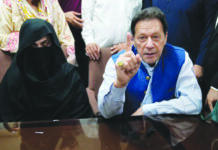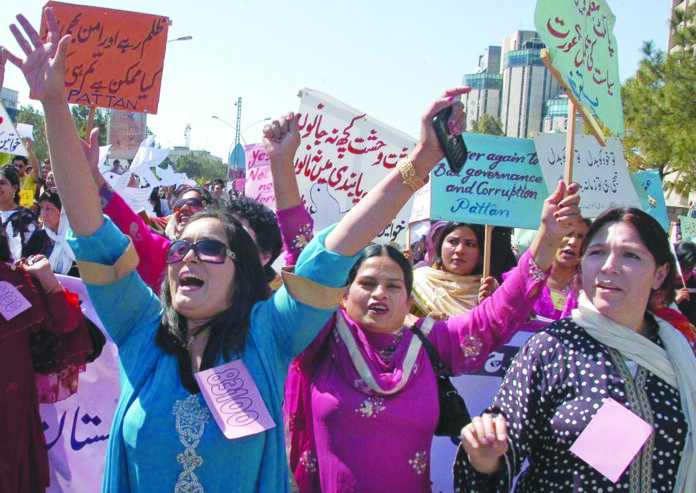Gender inequality persists as a pressing issue globally. Despite countries having achieved magnificent progress in socio-economic development, no country has achieved full gender equality. In recent years, strides have been made in certain areas, such as education and workforce participation. However, deep-rooted cultural attitudes often limit opportunities for women, particularly in rural and marginalized communities. Moreover, women continue to face discrimination and barriers in accessing economic opportunities and leadership roles. Unfortunately, the situation of disparities is exacerbated in developing countries like Pakistan due to poor policy making process and its flawed implementation.
Education is unequally accessible to girls compared to boys. According to the World Bank, achieving universal education for girls (50 years) is projected to take significantly longer than for boys (30 years), with a considerable gap in school enrollment rates between genders. Moreover, 26 percent of girls and 19 percent of boys have never been to school. The gap between boys’ and girls’ education occurs due to unequal funding, lack of female teachers and inadequate infrastructure in girls’ schools. Moreover, traditional gender roles further impede girls’ access to education, discouraging families from prioritizing their daughters’ schooling.
The disproportionate burden of unpaid care work falls on women, limiting their participation in the workforce. According to some estimates, the total cost of women’s unpaid care work is almost a fourth of the country’s GDP. According to the ILO, on average, men in Asia and the Pacific region spend only 28 minutes per day on unpaid labour, which is just eight percent of their total working time. Conversely, women and girls spend the bulk of their time on unpaid care work, that is, child rearing and education; caring for elderly, sick or disabled family members; cooking and cleaning; fetching water and fuel supplies— working on average anywhere between 12 to 16 hours a day. This is directly responsible for women’s low economic participation and increases the dependency ratio that in response increases the incidence of poverty more in females relative to males.
Financial inclusion empowers women by ensuring their financial stability and allows them to save money to combat economic shocks. And the country has one of the lowest financial inclusion rates in the world, with 79 percent of its 231 million people operating outside the formal banking system, according to the World Bank’s Global Findex Database. Whereas women are unequally positioned on the lower side of the financial divide, as only 13 percent of women have their own bank accounts, compared to 28 percent of men.
The World Economic Forum ranked Pakistan at third-last place in terms of economic participation and opportunity for women. Regardless of making up 49 percent of the total population, the participation rate for female workers is drastically low (21 percent) which is also well below the global percentage i.e., 39 percent. However, the country has shown improvement in the female labour force participation, but pace of progress is slow, and Pakistan is ranked 142 out of 146 countries by the Gender Gap Index 2023. The national average unemployment rate was 6.3 percent in 2021. In comparison, the unemployment rate among female graduates was 3.8 times higher than that of males. On the whole, more than one-third of women graduates were unemployed in 2020-21. The absence of legal protections against discrimination is limiting employment opportunities
The precarious situation for women does not stop here, as the gender wage gap remains a persistent challenge. Women who are participating in labour market are earning a median wage of Rs 12,000 a month, whereas males are earning Rs 18,900 a month. One of the reasons is that there is no litigation for equal pay for work of equal value.
According to the Asia Development Bank (ADB) Report titled “How Female-Friendly Are Workplaces in Urban Pakistan?” (2022), 70 percent of firms sampled expressed reluctance to hire female employees, with only 20 percent of them having employed females. Among these, 62 percent of firms do not provide essential benefits such as maternity or paternity leave, pick-up and drop-off services, and supportive infrastructure like separate prayer rooms and toilets. The report also notes that as firm size increases, the likelihood of offering these services also increases.
One significant obstacle to female labour force participation highlighted in the report is the lack of safe and affordable transportation. Dauntingly, 70 percent of women who use public transport reported experiencing unwanted advances and inappropriate behaviour from male passengers, as per ADB findings. Additionally, less than five percent of firms with female employees offer pick-up and drop-off services, leaving many women to arrange their transportation, which can be prohibitively expensive. Consequently, a significant portion of women’s earnings may be spent covering transportation costs.
Women are also experiencing sexual harassment at workplace despite the existence of a law. The data of Federal Ombudsman Secretariat for Protection Against Harassment exhibits that the total number of complaints against workplace harassment from 2018 to 2022 was 2,169. Out of these, 46 percent and 26 percent of the complaints were made by women working in the private and the government sector, respectively.
Females who are expecting a child have to face a stern reality of a motherhood penalty. Because of a non-conducive working environment like availability of childcare facilities, provision of nursing breaks and no protection from dismissal for pregnant women, hence they must leave their jobs. In lieu, females who are entitled to maternity leave are not getting 100 percent benefit. As per Women Business and Law (WBL), Pakistan is among 42 countries which are regulating maternity leave but not providing 100 percent maternity leave benefit.
Besides entering and sustaining themselves in the employed labour force, females do face multiple obstacles when it comes to career advancement. According to the International Finance and Corporation and Pakistan Business Council, one in 20 women make it to senior management positions. On the other hand, women representation in government and reform making is prerequisite, however women representation in Parliament is merely 21 percent. They routinely face harassment and derogatory remarks and struggle for equal participation in the decision-making process. It’s not just governmental institutions but it is prevalent in the private sector as well. The opposite gender became insecure with talented women, and they started undermining their skills and confidence just to preserve their power.
It’s crucial to evolve dynamics of women’s roles in all aspects. Gender inequality can be overcome by focusing on three key dimensions: parity, equity, and equality. Parity signifies an equal enrollment of boys and girls in schools, while equity refers to strategies and processes aimed at providing fair and equal opportunities for all individuals to pursue and benefit from educational opportunities. Equality, on the other hand, entails ensuring that females and males have equal rights, freedoms, conditions, and opportunities to realize their full potential in society. We must develop policies aimed at reducing discrimination and promoting a fair and conducive work environment.























